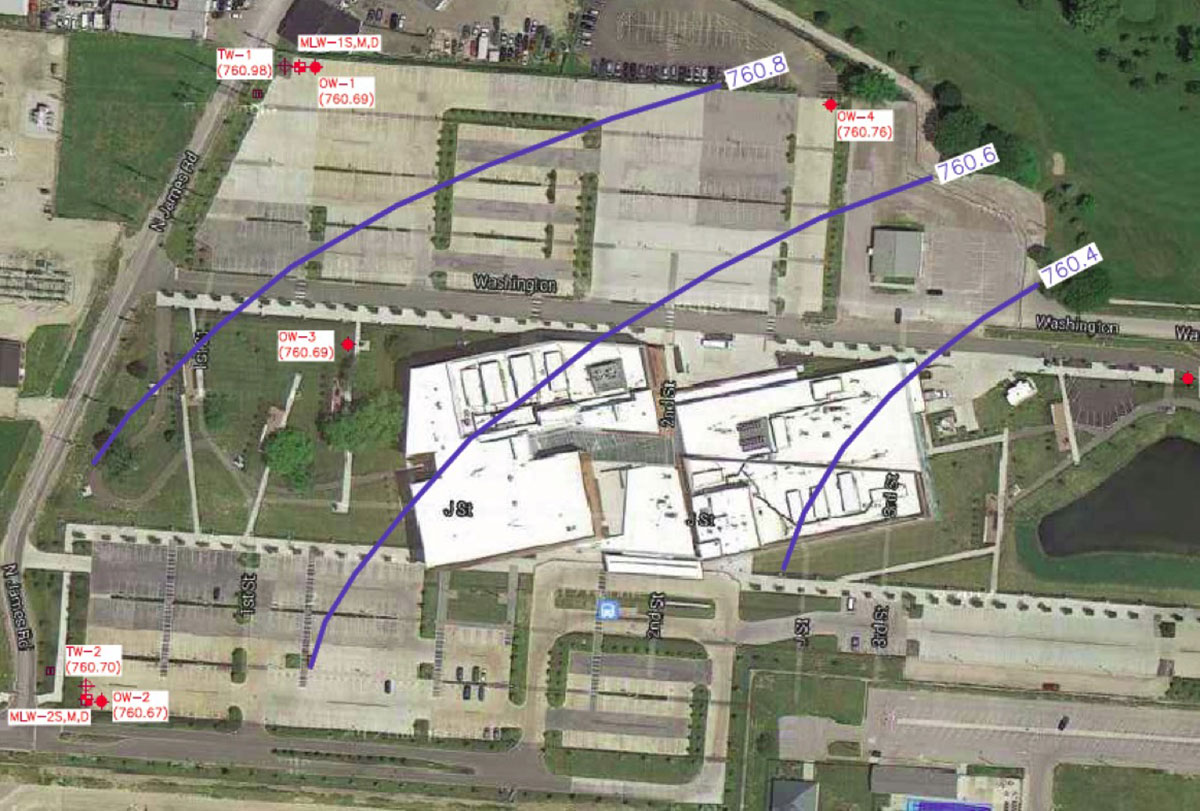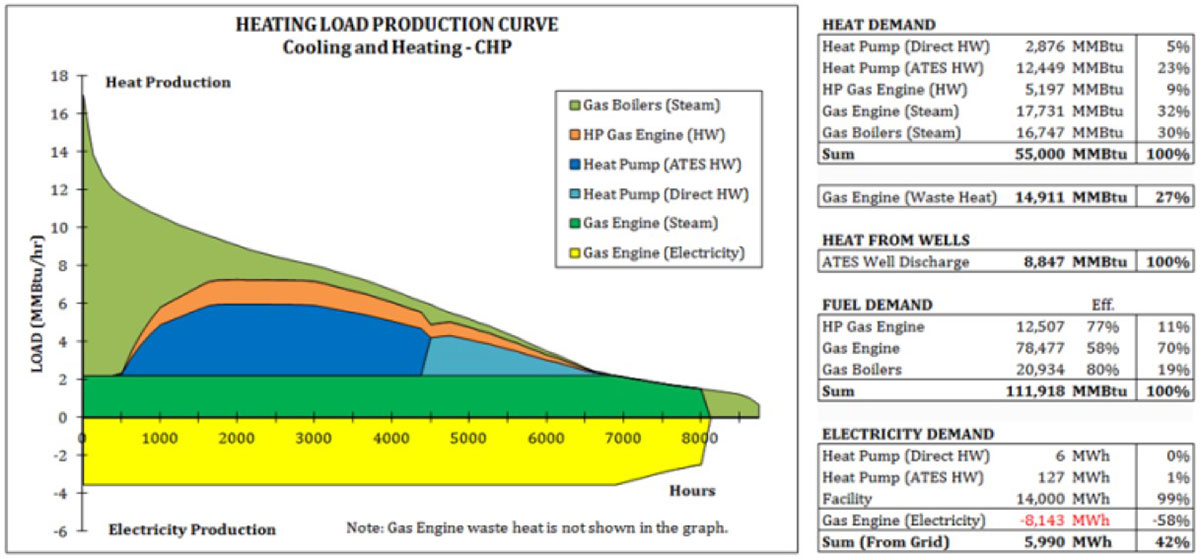VA Medical Center ATES and CHP Feasibility Studies
Underground Energy performed a detailed feasibility study of Aquifer Thermal Energy Storage (ATES) for the VA Medical Center in Columbus, Ohio. The project began with GIS analysis that identified a high-yield aquifer in the area.
The objective of the study was to evaluate the technical, regulatory and financial feasibility of an ATES project that could help meet the facility’s heating and cooling needs in a more sustainable and energy efficient manner than conventional HVAC or geoexchange systems. ATES requires a suitable aquifer, relatively large thermal loads, and a seasonally variable climate – all these conditions exist at the VA facility in Columbus.
Phase I of this project was a desktop feasibility study that evaluated a 380-ton ATES system for cooling only and two different scenarios for ATES cooling and heating with up to 5,260 MBH of heating for a planned expansion of the hospital. . We concluded that ATES would result in a up to a 50% reduction in cooling energy, up to 26% reduction in heating energy, 54% reduction in cooling water and 33% reduction in emissions. Underground Energy recommended that site-specific aquifer hydraulic and geochemical data be collected, and helped VA staff develop a hydrogeologic work plan, and we also performed the analysis of the data collected by a separate contractor. The field work involved installation of observation wells, pumping wells, performance of aquifer pumping tests, and geochemical sampling.
The Phase II study conceptual design involved an 880-gpm ATES well water system. The maximum thermal capacity of ATES at this facility is limited by the separation distance between the warm and cold stores, which is limited by the size and shape of the parcel. The cooling-only design charges the cold store in winter by rejecting heat from the aquifer’s warm store via dry coolers (conserving cooling-tower water and chemicals) and supplies chilled water for cooling at temperatures from 40 to 48 °F as the cooling season progresses. The cooling & heating options utilize a gas-engine-driven heat pump (HP) to transfer heat between the building and the aquifer stores. Heat from the HP is distributed via a closed hot water system and utilized for space heating and domestic hot water within the building. This gas engine configuration meets the definition of CHP because heat from the engine is recovered while mechanical energy is used to drive a heat pump, rather than an electrical generator in a typical North American CHP installation.




